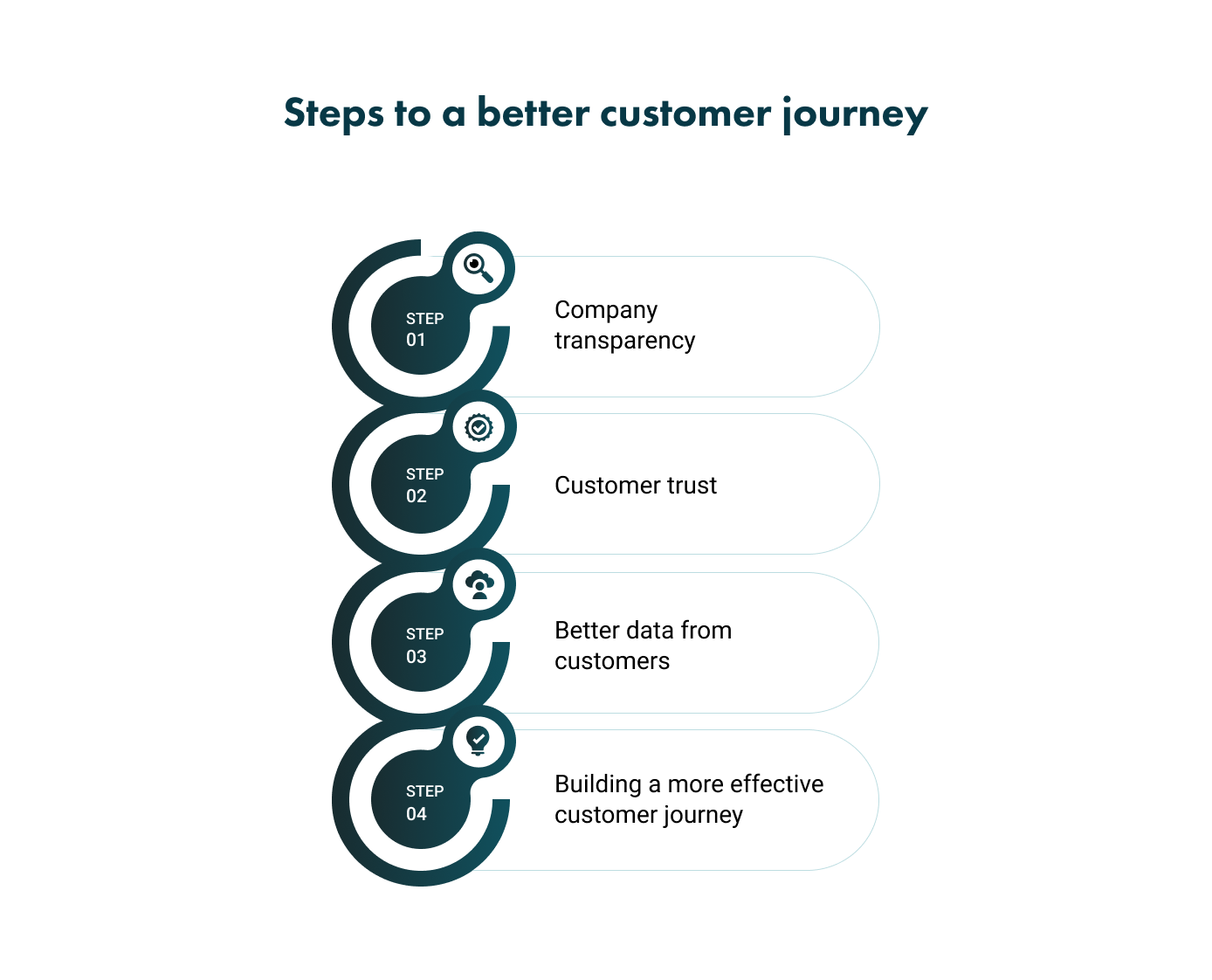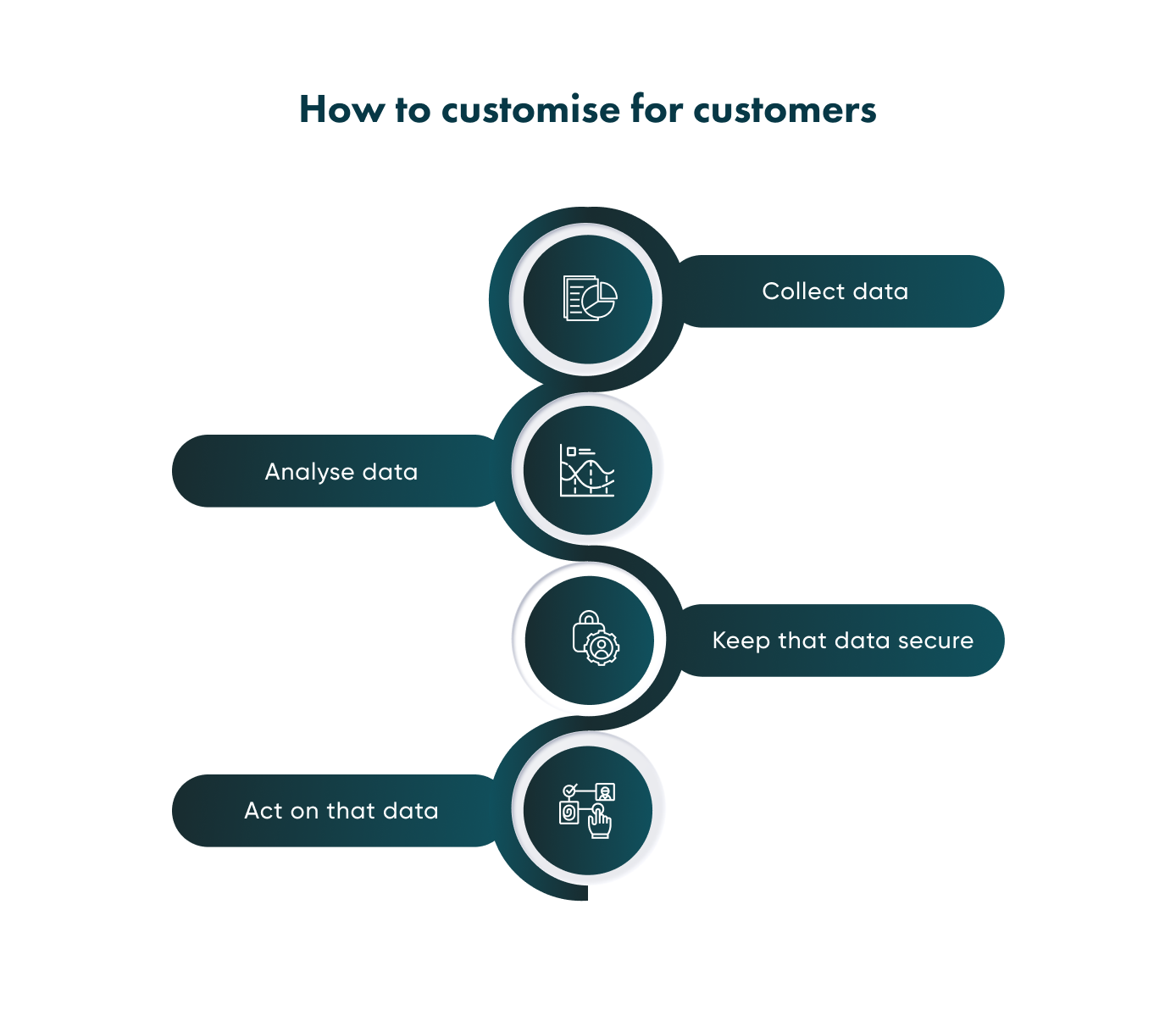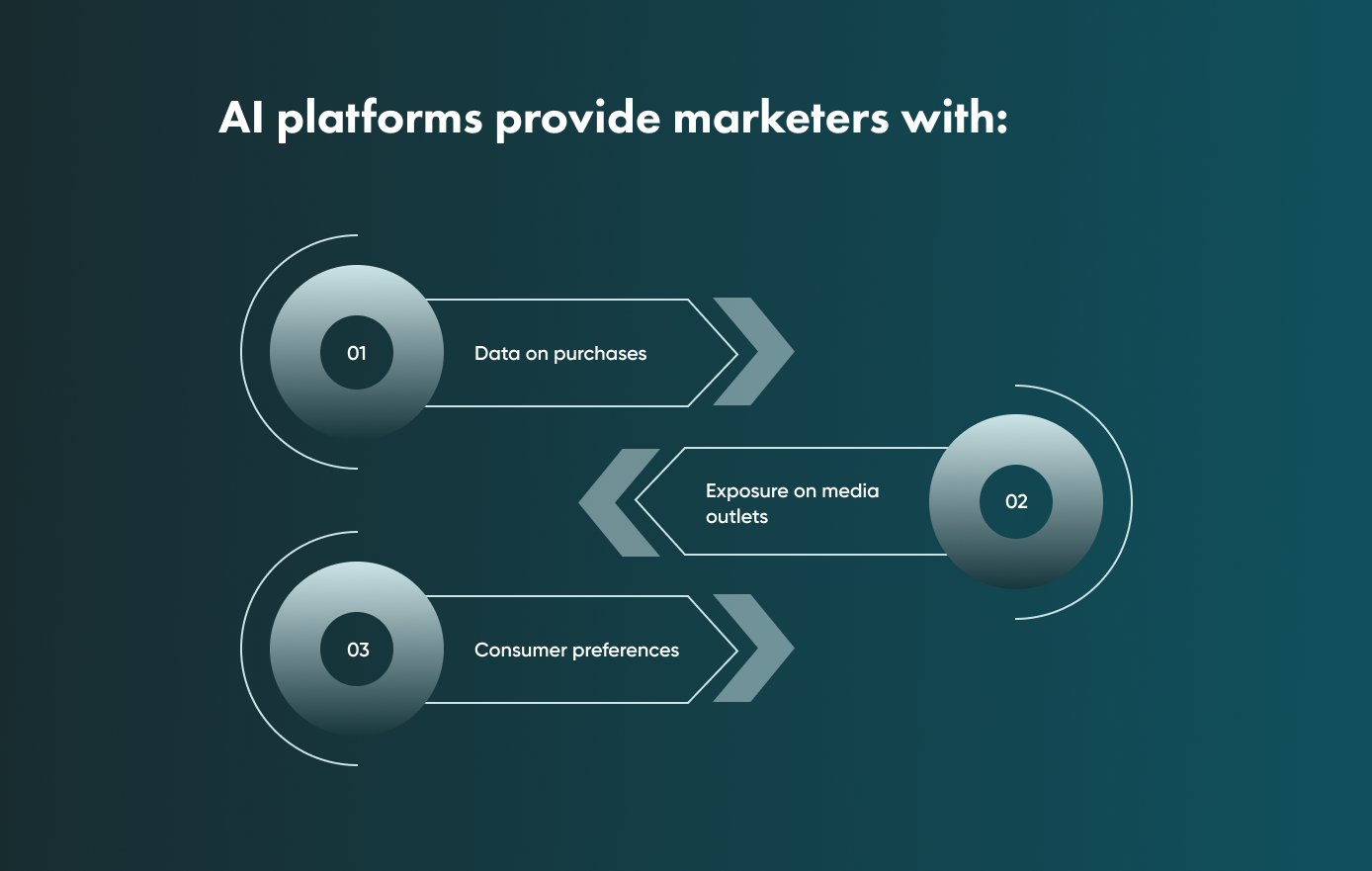The Top Marketing Automation Trends of 2023


Automation continues to be a buzzword for modern businesses, translating to: save human labour and money on things that technology can do more efficiently.
Automation has been buzzing around the marketing world for some time now – and the sound only grows stronger this year.
In this article, we let you in on the next big trends in marketing automation.
At Go Wombat, we work with the latest technology and draw from over 10 years of experience automating workflows for our clients. If you already have an idea for a marketing automation plan for your business (or these trends spark one), let’s set up a consultation.
About marketing automation
Before we dive into the trends, let’s briefly review some marketing automation basics.
Why marketing automation is important
For starters, marketing automation can reduce overhead by up to 12.2%.
Businesses can take advantage of automation in marketing to:
- Send messages when action is taken on your site
- Schedule new content across channels
- Conduct targeting and retargeting for ad campaigns
- Set up email campaigns to nurture leads
- Find optimum opportunities for purchases and upsells
- Get reports on customer behaviour and how well your campaigns do
Different categories of automation in marketing
You’ll see these categories peppered across the top trends:
- Marketing intelligence (think marketing automation, but a “2.0” version)
- Advertising automation (a subset of marketing automation)
- Advanced workflow automation (applies to almost all sectors, but for here, marketing’s the obvious focus)
9 new trends in marketing automation
The extent of automation in marketing continues with a steady growth.
According to a recent survey of marketers, this year we’ll be seeing a moderate increase in marketing budgets for automation.
Based on our research, this will play out in the following ways:

1. We’re good on quantity, now for some quality of data
43% of those surveyed marketers mentioned above said that their primary goal this year is optimising the overall strategy. But how?
Perhaps that could be answered by the two following (and more specific) goals of those surveyed:
- Improve data quality overall
- Identify ideal customers/prospects
You want the truth
Forbes sums up the current conundrum:
Poor data quality is marketing’s affliction, and high-quality data is marketing’s holy grail, yet achieving high-quality data is marketers’ ongoing battle.
Tech has allowed us to accumulate mountains of data about consumers, but how much of that is useful for finding leads and then converting them into your customers?
Making smarter decisions with marketing strategies doesn’t come from just having a huge amount of data. You need data that is truthful and useful. But sorting through it all would take an enormous amount of time.
That’s why we will see more (and better) technological solutions that will automate not only the collection of data, but also which data to use and how to use it.
How exactly will this be carried out in top marketing automation platforms in the near future?
Blockchain, for one, can address issues limiting the veracity of data, as it validates and analyses with its ledger-based transparency.
How to handle that truth
All this data – quality data – can help companies understand customers better. And when they understand their customers better, they can then customise what they offer that customer.
This requires a company to:
- Be able to collect data
- Be able to analyse data
- Keep that data secure
- Be able to act on that data (i.e. respond to the customer’s needs in a timely manner)

2. Further focus on email automation
Compared to all the other marketing areas, email automation has grown the most in the past 2 years. In fact, we’ve seen a 23% growth in the reported use of it in that time period, according to the same survey-based report from above.
Automation can already handle email sequences that warm up leads over time. As people’s unread mail counts keep climbing, solutions will have to be more selective about when to send emails and what the subject matter should be.
So, we should see an increased concentration on email marketing as one of the top automation trends this year.
What else is on the horizon?
According to the same report cited above, the 2 other areas where marketers say they plan to implement automation the most in 2023 are in social media management and paid ads. Let’s dig into those now.
3. Smarter social media marketing
It’s no secret that a lot of people are spending a lot of time on social media. Yet engaging as it can be, all that time does result in fatigue.
There’s just so much content now, and people are even growing weary of brands filling up their feeds. They are shunning old-school marketing attempts and creating groups around specific interests, according to a special marketing issue of the Harvard Business Review (HBR) from Winter 2022.
That doesn’t mean that marketers will do a total social media detox. Instead, in order to build and maintain consumer trust, they will have to get smarter in their approach.
How do you get your signal to cut through all that noise?
For one, marketing departments and agencies will have to get data about behaviour and respond with behaviourally-themed posts.
The trick now will lie in automating without overwhelming.
4. Paid ads intelligence
Paid ads have seen the biggest increase in budget allotment in the past year. But like the trends above, advertisers will have to get smarter as consumers get more jaded.
Media buying
In the same HBR special issue, Google’s VP of Global Ads Marketing Marie Galin-Merle claims that marketers who adjust budgets frequently tend to be leading marketers. And one important action to optimise budget agility is to adopt automation for media buying.
As you have marketing automation platforms do your bidding (pun intended), you’ll want to make sure they’re placing ads appropriately. Not to mention, you’ll want to avoid ad fraud, which Forrester estimated meant a loss of 7.4 billion USD in 2016.
Therefore, monitoring and fraud-detection tools will be essential in lowering this risk moving forward.
Ad bias
A pervasive problem of bias results in targeted discounts and dynamic pricing, according to the HBR. Personalisation algorithms in advertising automation will have to be changed to stop that bias from continuing.
A case in point
Go Wombat is ahead of the curb with intelligent advertising.
For instance, we’ve developed a platform called 4D that allows the user to select the best matches for the context of the ad with the right audience. 4D helps brands, agencies, publishers, and ad platforms navigate the post-cookie era by ensuring ads are aligned with specific content and context across all channels.
5. Optimised video content in the marketing funnel
Video is far and away the preferred method for consumers to learn about products, according to statistics compiled by Wyzowl.
Getting video content to prospects earlier in the marketing funnel is one of the trends in automation to watch in 2023.
Marketing automation with video content will prove useful not only in getting it to the customer at the right point, but also on the creative side, as making effective videos is time-intensive. New and improved tools, such as those powered by AI, will accelerate the content-producing process in this area.
6. Code-free lead generation
For its ease of use and speed in dealing with all that aforementioned data, cloud-based and code-free automation and data extraction will become more popular in the year to come.
In a recent newsletter, Exploding Topics revealed that their trend-spotting algorithm detected a surge in online search volume for software related to code-free lead generation (AKA no-code prospecting). This is part of what they consider a lead generation API meta trend.
Exploding Topics predicts the global market for this to grow by 3x in 6 years, as marketing departments look for ways to supercharge gathering prospects to convert into customers down the line.
7. Omnichannel transformation
Big brands like Starbucks, Nike, JP Morgan Chase, and Home Depot “have publicly announced personalised and seamless omnichannel experiences at the core of their corporate strategy,” says the HBR.
And Hubspot Marketing says 81% of marketers already manage more than 3 channels.
Intelligence experience engines, although difficult to build, are already being used and they will become more common in the near future. Further developments like this in AI marketing automation will make multichannel-related workflows run even smoother.
“An omnichannel transformation is the only way for a company to address rising complexity, provide an excellent customer experience, and manage operational costs,” states McKinsey.
8. Increased ease of creating effective customer journeys
Unfortunately, customers still run into hiccups during their journey with your brand. With the right software, you can keep the customer satisfied as they continue their experience with less friction.
If you have questions about what the right software would be for your organisation, get in touch with our experts at Go Wombat today.
Transparency leads to trust

If you want to create an effective customer journey, you’ll need specific data about those customers. But for them to open up to you with that kind of information, they’ll need to trust you. Transparency about how you’ll use data is key to earning that trust.
Again, utilising blockchain technology (a trend-within-these-trends) could help with keeping data use transparent to the customer.
Connected strategies
Once you have their trust and know what your customers want and when they want it, then you can carry out automatic execution. We’re moving far beyond the simple, old respond-to-desire ideology here.
The age of buy what we have is over. If you want to achieve sustainable competitive advantage in the years ahead, connected strategies need to be a fundamental part of your business. (HBR, Winter 2022)
Customer-value management
Sometimes cost-cutting measures driven by pressure from those at the top actually hurt customers – and later your bottom line.
Customer-value management tools will give investors the analytics they need to track customer value like other assets. Then, budgets can continue to allocate the funds to further improve the customer experience.
9. The (continued) rise of the chatbots
This marketing automation trend is nothing new, but as AI-powered assistants become more commonplace and integrated into homes, we will start to see some novel developments.
What marketers will do for bots
Marketing now will not only be focused on consumers. Yes, you read that right.
Now brands will have to also shift marketing efforts to AI platforms “to influence platforms in order to get preferential positioning on AI assistants”, according to the HBR.
It goes on to say that “customer requisition will become even more of a science and will focus on a single channel – the AI platform.”
Much as marketing strategies are already focused on SEO (search engine optimisation), one of the future trends of marketing could be called AIPO (AI platform optimisation).
What bots will do for marketers
However, those platforms will also be creating value for marketing departments in the form of:
- Data on purchases
- Exposure on media outlets
- Consumer preferences
But – touching back on a trend in marketing mentioned above – how will businesses successfully manage, secure, and act on that data?
They’ll need a robust marketing automation software solution.

Finding a solution for you
The marketing automation market is already substantial. Currently, there are over 350 ready-made marketing automation platforms searchable online.
Overwhelmed by choices? Set up a consultation with Go Wombat, and we can go over your requirements, make it clear how we can help you, and make a decision on a solution suited for your business.
The next step from here is building the best marketing automation software customised for your company. Let’s start talking today.
Unlock Success with Premium Software Development
Contact us


Conclusion
In the year ahead, the marketing and advertising industry will be looking for solutions that get them better data, make experiences more seamless and satisfying, and improve the way automation is implemented in email, social media, and paid ads. Not to mention, the use of chatbots and other AI-related features will become more sophisticated.
We’ve seen the marketing automation industry flex its muscle for some time, but now marketers are looking for more finesse.
The overarching trend we will see in 2023 is the push toward more intelligent automation.
How can we help you ?







